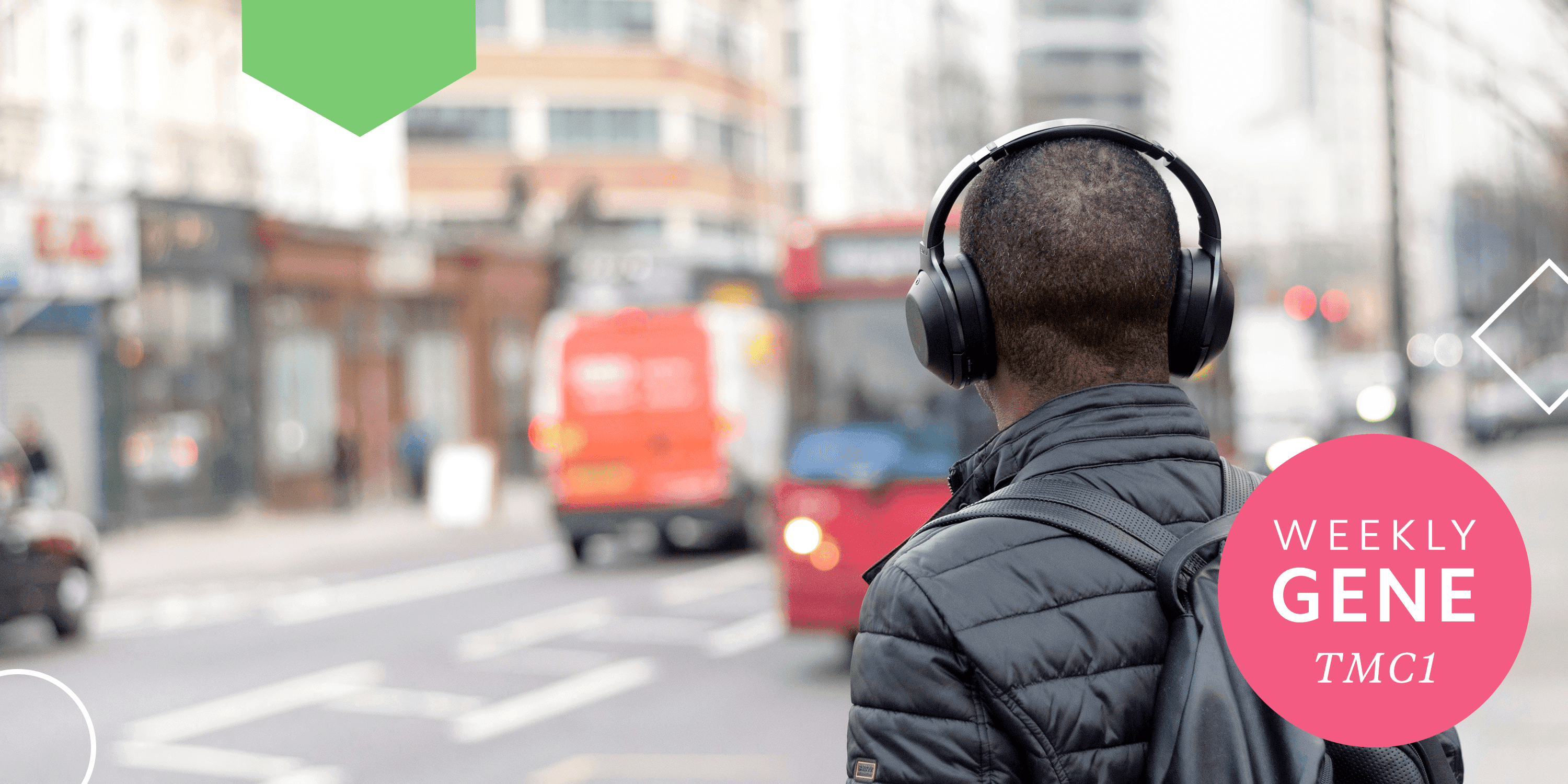The gene that electrifies sound

Imagine for a moment the sounds of a big city: cars honking, people talking, music playing, and a siren off in the distance. Now imagine the sounds of a tranquil forest. Wind rustles through leaves and occasionally birds chirp out different tunes. Sounds like these help us experience the world around us and usually make for vivid parts of our memories. Have you ever stopped to wonder how our brains are able to interpret the noises around us? Sound travels as physical waves that are somehow captured by our ears and translated into electrical signals—the language of neurons. Well, scientists have wondered too, and they recently got an answer: It comes down to the TMC1 gene.
Understanding how the human body captures and interprets sound has been the focus of scientific research for hundreds of years1. Early observations showed us that the fan-like shape of our ears helps to capture and direct sound waves towards special structures inside of them. In the inner ear, these sound waves are amplified and converted into electrical signals that flow from neuron to neuron until they reach the brain where they can be interpreted as sound. We’ve known this much for decades, but what we didn’t know was how the conversion of sound to electricity actually happened.
Sound has to become electric for our brains to hear it
Resting deep within the inner ear is a group of specialized cells known as hair cells. They got this name thanks to long, slender structures that extend out from their bodies. These structures act like microphones by sensing the presence of sound. Sound is a form of moving energy. When we speak, our vocal cords vibrate as air is rushed past them. This vibration transfers energy into the air molecules, causing the formation of a wave. Peaks of the waves are where the air molecules vibrate strongly, and wave valleys are where molecules vibrate slowly. It’s these vibrations that the hair-like structures detect. Sound vibrations jostle the structures, and their movements trigger an electrical pulse in neurons that are connected to the hair cells2,3.
While learning that energy from sound waves can be transferred to hair cells is a big step towards understanding how hearing works, it doesn’t explain how movement of the hair-like structures results in an electrical pulse. It took decades for researchers to answer this question, but in 2018, researchers collaborating from Harvard University, Ohio State University, and the National Institutes of Health announced that they had significant evidence pointing to the TMC1 gene as the critical translator of sound4.
TMC1 is shorthand for transmembrane channel-like protein 1. This gene is responsible for telling the body how to make a special protein that rests on the hair cells3,4. Specifically, TMC1 protein has been seen at the tips of the hair-like structures and is what’s known as a mechano-electric transducer channel. These types of proteins form a gateway that can selectively open to let molecules flow in and out of cells. Proteins like TMC1 may sit in a closed position, preventing the flow of charged molecules. But when physically touched, the protein’s shape can change and allow the selective entry of molecules2-4.
This is how our body’s sense of touch works, and it’s also how our sense of hearing works3. TMC1 is a hearing-specific mechanic-electric transducer protein that changes its shape when sound enters the ear and causes the hair-like projections to vibrate. This vibration triggers a change in the TMC1 protein and allows for the flow of electrically charged ions into the hair cells4. This flow prompts an electrical pulse. And, voilà! Sound has been converted into electrical signals that the brain can interpret.
TMC1 is not the only protein capable of doing this; other observations suggest that similar proteins may help3. But to date, TMC1 appears to be the most significant protein involved in the conversion of sound waves to electrical signals in adult ears.
- Water, Thomas R. Van De. “Historical Aspects of Inner Ear Anatomy and Biology That Underlie the Design of Hearing and Balance Prosthetic Devices.” The Anatomical Record: Advances in Integrative Anatomy and Evolutionary Biology, vol. 295, no. 11, Aug. 2012, pp. 1741–1759., doi:10.1002/ar.22598.
- Stöver, Timo, and Marc Diensthuber. “Molecular Biology of Hearing.” GMS Current Topics in Otorhinolaryngology, Head and Neck Surgery 10 (2011): Doc06. PMC. Web. 17 Oct. 2018.
- Fettiplace, Robert. “Is TMC1 the Hair Cell Mechanotransducer Channel?” Biophysical Journal 111.1 (2016): 3–9. PMC. Web. 17 Oct. 2018.
- Pan, Bifeng, et al. “TMC1 Forms the Pore of Mechanosensory Transduction Channels in Vertebrate Inner Ear Hair Cells.” Neuron, vol. 99, no. 4, 2018, doi:10.1016/j.neuron.2018.07.033.